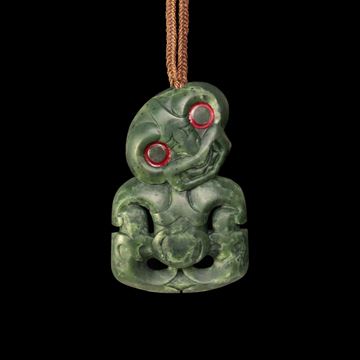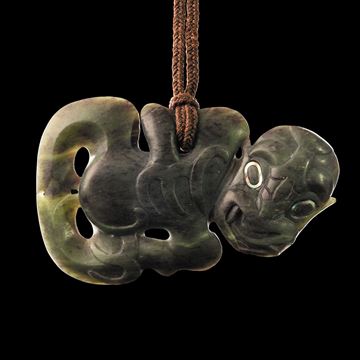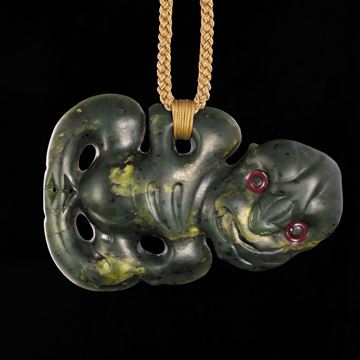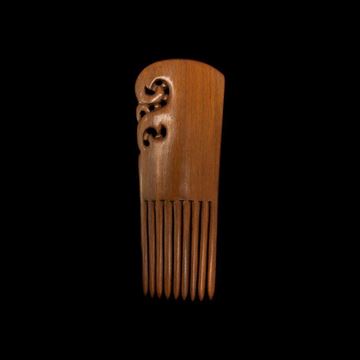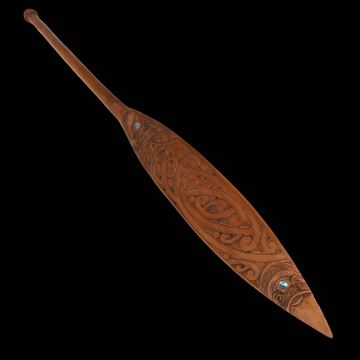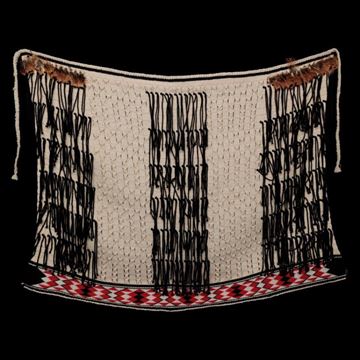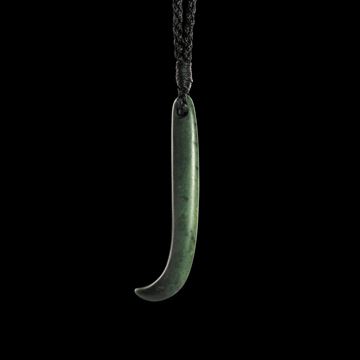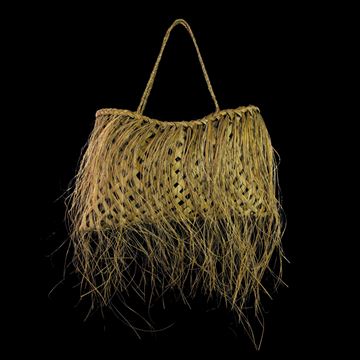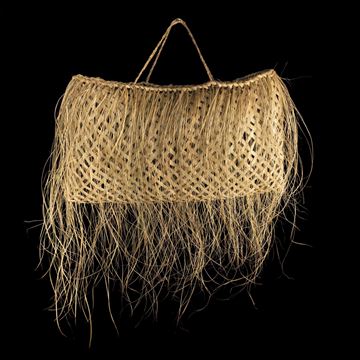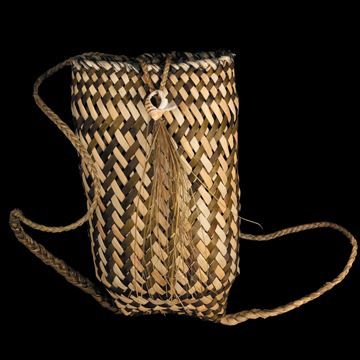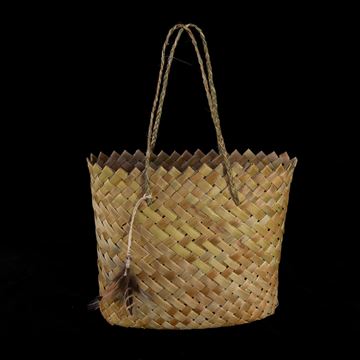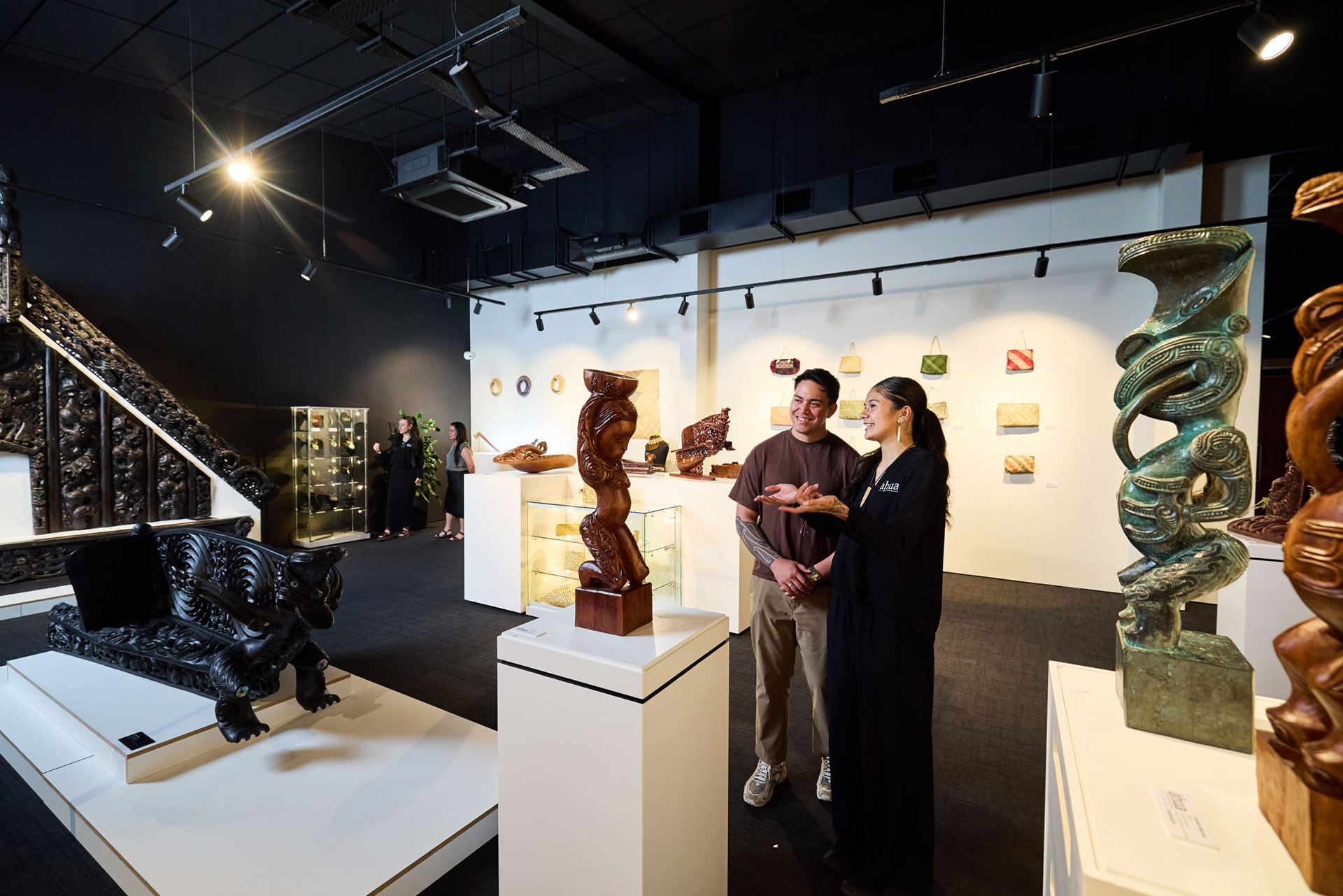
Āhua Gallery
Select Subcategory
Hei Tiki - 6717PD
Hei tiki are the best known of all Māori adornments. Tiki are symbols of fertility that depict a new-born child. They are often family heirlooms bearing personal names and embodying their wearers lineage. As with most Māori personal adornments, hei tiki are often passed down generationally.
Material: Pounamu (Kawakawa)
Measurements: 88mm x 58mm
$2,600.00
Hei Tiki - 6723PD
Hei tiki are the best known of all Māori adornments. Tiki are symbols of fertility that depict a new-born child. They are often family heirlooms bearing personal names and embodying their wearers lineage. As with most Māori personal adornments, hei tiki are often passed down generationally.
Material: Pounamu (Hapopo)
Measurements: 115mm x 75mm
$2,700.00
Hei Tiki - 6819HW
Hei tiki are the best known of all Māori adornments. Tiki are symbols of fertility that depict a new-born child. They are often family heirlooms bearing personal names and embodying their wearers lineage. As with most Māori personal adornments, hei tiki are often passed down generationally.
Material: Pounamu (Kawakawa)
Measurements: 113mm x 76mm x 12mm
$2,600.00
Heru - 4958CF
Heru were produced in varying shapes and sizes and were made from rākau (wood) and in some instance’s parāoa (whalebone). These combs were highly valued as personal heirlooms and were consequently passed down from one generation to the next, often acquiring their own personal names.
The combs were mostly decorative and held the pūtikitiki (top knot) in place. When a comb was broken, it was placed in a swamp or a sacred place for safe keeping because the head was the most sacred part of the body and therefore tapu (sacred).
Material: Tōtara
Measurements: 230mm x 90mm x 4mm
$2,100.00
Hoe - 5873CF
Smaller hoe such as this were used in ceremonies such as the launching of a waka taua or war canoe, and in other rituals also. This particular hoe has the northern fish scale design or unaunahi on the front. Although the hoe looks quite simple, its not until you turn it around to see the reverse side of the hoe you see the beauty of the taitokerau serpent art. The twisting shape is said in some versions to represent an eel, another version says it is based on a stick insect. Many hoe have a concave or dished out back, where as this one has the northern figure carved in the dish, making it very unusual.
Material: Tōtara (Redpine)
Measurements: 640mm x 62mm x 18mm
$2,890.00
Kākahu (Contemporary) - 1630WK
The kākahu takes inspiration from traditional Māori cloaks. A kākahu is mantle of prestige and honour. This kākahu is made from mirowhiti miro (mop yarn) also incorporating materials that represent different types of kākahu including but not limited to kahu huruhuru (feathers) and tāniko.
Material: Cotton, Mop Yarn, Wool, Feathers
Measurements: 875mm x 775mm
$3,900.00
Kākahu (Contemporary) - 1731RA
The kākahu takes inspiration from traditional Māori cloaks. A kākahu is mantle of prestige and honour. This kākahu is made from mirowhiti miro (mop yarn) also incorporating materials that represent different types of kākahu including but not limited to kahu huruhuru (feathers) and tāniko.
Material: Cotton, Mop Yarn, Wool, Feathers
Measurements: 1016mm x 762mm
$4,400.00
Kapeu - 6850HW
Kapeu are slender adornments with a slight bend at the bottom and were often worn as ear pendants. Kapeu were highly prized and a sign of high rank in Māori society. They are commonly also worn as neck pendants. As with many Māori personal adornments kapeu are often passed down generationally.
Material: Pounamu (Kawakawa)
Measurements: 87mm x 22mm x 7mm
$430.00
Kete Kai - 5818RW
Kete Kai is a food gathering basket that is typical used to house food from the ocean or the land. Kete kai was used for every type of food that was gathered. You were not allowed to mix land food kete with the ocean food kete as it was tapu. The pattern on this kete kai is taki tahi and the holes are called puareare.
Material: Harakeke
Measurements: 360mm x 200mm
$490.00
Kete Kai - 5830RW
Kete Kai is a food gathering basket that is typical used to house food from the ocean or the land. Kete kai was used for every type of food that was gathered. You were not allowed to mix land food kete with the ocean food kete as it was tapu. The pattern on this kete kai is taki tahi and the holes are called puareare.
Material: Harakeke
Measurements: 340mm x 490mm
$620.00
Kete Pikau - 5817RW
Kete Pikau (backpack) are used for carrying personal items.
Material: Harakeke & Shell
Measurements: 430mm x 230mm
$690.00
Kete Whakairo - 5802RW
Kete whakairo are woven flax bags of a finer quality than the general utilitarian kete. They are normally made from prepared strips of flax and/or kiekie, some of which have been dyed. Kete whakairo may also feature geometric designs.
Material: Harakeke & Feather Adornments
Measurements: 240mm x 200mm x 100mm
$490.00

